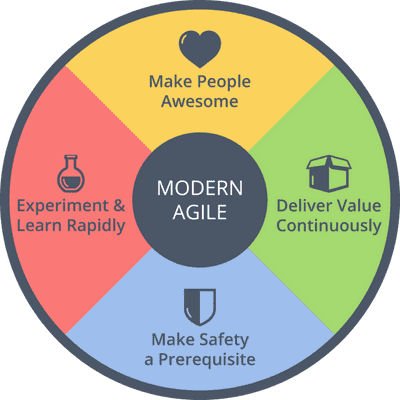# Let Teams Figure It Out
! [ rw-book-cover] (https://cutle.fish/static/f4f651ad6a67966a86c9cc4b0416408f/497c6/1*-4uJNpSIV5PILQRt2peooA%402x.png)
URL: https://cutle.fish/blog/let-teams-figure-it-out
Author: cutle.fish

## AI-Generated Summary
In this post, the author describes a team's journey in continuous improvement and the importance of allowing teams to figure out their own practices. The author emphasizes the need for a team that is motivated to improve, has support from the organization, and has a clear vision of what success looks like. The team in the example decides to try Scrum and some technical practices from Extreme Programming, but the author emphasizes that the specific practices chosen are less important than the team's commitment to continuous improvement. The author also addresses common questions and challenges related to management support, certification, mindset, and expertise, and highlights the importance of creating a culture of learning and experimentation. The author concludes by emphasizing the need for organizations to focus on enabling resiliency and true agility rather than relying on prescriptive ways of working.
## Highlights
> Take a team that is 1) motivated to continuously improve, 2) has the long-term support of their organization, and 3) has a general sense of what awesome might look like for their context (individually, as a team, and as a company). ([View Highlight](https://read.readwise.io/read/01j6xnr29ebnjqxq8w425rx8vd))
> a Kanban board to track their work and continuous improvements experiments, a visualization to show their progress towards *awesome (high quality, customer value, small batches, and individual skills development)*, ([View Highlight](https://read.readwise.io/read/01j6yg9kg3myv4yzd8kv18jt7k))
> Continuous improvement is an investment. It takes time and focus. An alternative perspective is that it is management’s job to create the conditions for continuous improvement, and not to drive it themselves. ([View Highlight](https://read.readwise.io/read/01j6ygcngs2qk2xxqqyvgem1zn))
> **People generally don’t have this “mindset”. Most people just want to be told what to do.**
> JC: Hmmm. Maybe that viewpoint (though true, sometimes?) is part of the problem? Will that magically go away? If your system relies on people being told what to do, and telling other people what to do, then be prepared to move very slowly. ([View Highlight](https://read.readwise.io/read/01j6ygea848fbfh18maecnr46p))
> **What if they pick the wrong stuff?**
> JC: They’ll adapt. Keep in mind that we can only handle so much change at once. So they likelihood you’d pick “all the right stuff” at first, not to mention learn that all at the same time, was low to begin with. ([View Highlight](https://read.readwise.io/read/01j6ygjh7rk6gm1nrhemk6h4av))
> anyone can be a learner (especially the skilled problem solvers who gravitate to this work). Learners know when to get help, and eventually become experts themselves. Cultivating a culture of learning and continuous improvement is foundational. ([View Highlight](https://read.readwise.io/read/01j6ygkp0a4fnrxcvst2wn0e9k))
> Do you have anyone internally who is an expert, and has experienced something *better* than the current state of the organization and/or team? Cool. Invite them to work alongside the team. ([View Highlight](https://read.readwise.io/read/01j6ygmpx7gxdrxm852fq5fvx6))
> I fully respect experience and expertise. But don’t hire it, and assign it to “the teams” when 80% of the problem exists outside the teams ([View Highlight](https://read.readwise.io/read/01j6ygnvgcht6d23f65tfpj6kn))
> What matters is …
> 1. An intrinsic commitment to continuous improvement (people have to truly want it, and get pleasure out of it)
> 2. The long-term support of their organization (including a commitment to establishing and maintaining psychological safety, limiting work-in-progress, etc.)
> 3. A general sense of what awesome might look like for their context (provided that their *sense of awesome* maps to delivering continuous value to customers, somehow) The debates on [way] vs. [way] sort of miss an important point. ([View Highlight](https://read.readwise.io/read/01j6ygq7wxx5kfrk1waaec68wg))
> VERY DIFFERENT from a team opting into continuous improvement to deliver more value to customers, making safety a prerequisite, and being given the bandwidth to *do the hard work* required for continuous improvement. ([View Highlight](https://read.readwise.io/read/01j6yjzcka41j4yssq2096sd8m))
> Our goal needs to be enabling resiliency and true agility, rather than a dependence on prescriptive ways. ([View Highlight](https://read.readwise.io/read/01j6yjxm1nmrf1vwf68t1xg587))